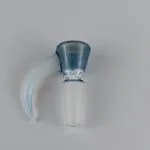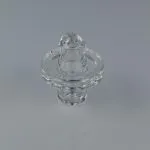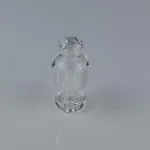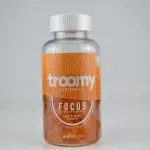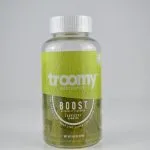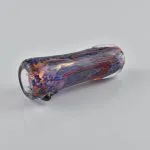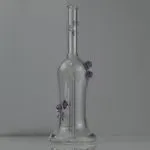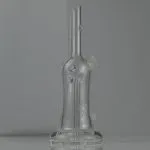Are you ready to master mushroom farming? Growing Reishi mushrooms is not only rewarding, but it’s also surprisingly easy! With just a few simple steps, you can create a thriving Reishi mushroom culture that will provide fresh and delicious mushrooms for months.
Here we’ll discuss the basics of growing Reishi mushrooms, from creating liquid cultures to harvesting your harvest. Grab your sawdust bag and let’s get started – this will be fun!
Related: Want to learn more about the incredible healing properties of Reishi mushrooms? Our article, Reishi Mushroom: Nature’s Miracle, has all the information you need.
Table of Contents:
- Is It Possible To Grow Reishi Mushrooms?
- How To Grow Reishi Mushrooms Agar Cultures
- How to Make Reishi Mushroom Liquid Culture
- How To Grow Reishi Mushrooms, Grain Spawn
- Growing Reishi Mushrooms In A Sawdust Bag
- Caring For Your Sawdust Blocks
- Harvesting Reishi Mushrooms
- Troubleshooting Reishi Mushrooms
- Final Thoughts
Is It Possible To Grow Reishi Mushrooms?
Growing Reishi mushrooms can be done at home with a few simple steps. It is possible to grow these mushrooms outdoors and indoors. However, environmental factors need to be considered.
High humidity and a temperature range between 65-75°F (18-24°C) should be maintained for optimal results. Although achieving this humidity and temperature indoors can be challenging, it’s not impossible. Depending on where you live, you may need to invest in some additional equipment, such as a humidity dome.
In addition to creating an ideal environment for Reishi mushroom cultivation, there are other things to consider before starting. Reishi mushrooms contain numerous positive effects, including medicinal properties that boost immunity, anti-inflammatory, reduced stress and anxiety, improved sleep and support overall health benefits.
As such, they are considered valuable commodities and require specialized knowledge regarding their growth requirements and harvesting practices. Additionally, Reishi mushrooms require specific substrates, such as wood chips or sawdust, for successful indoor cultivation.
Growing Reishi mushrooms at home are possible if you are willing to put in the effort and have access to the necessary resources needed for success! All you need is some patience and dedication when it comes time for harvesting since each step requires careful attention throughout the process from start to finish.
With enough planning, preparation, and proper care during growth cycles, anyone can enjoy cultivating these beneficial fungi inside their homes!
How To Grow Reishi Mushrooms Agar Cultures
If you’ve ever dreamed of cultivating your mushroom culture, now’s the time to do it! With Reishi mushrooms, you can start a fascinating journey into mycology. To begin your foray into growing these magical fungi, there are a few key elements to remember: culturing techniques, substrate preparation, temperature control, indoor cultivation, and fruiting strategies.
To begin, you’ll need spores or mushroom cultures from a reliable source. Ensure all equipment is sterilized—like jars, Celltreat Sterile Petri dishes, and culture media—to prevent unwanted microorganism growth. Potato Dextrose Agar (PDA) or Malt Extract Agar (MEA) are ideal culture media for Reishi mushrooms and should be prepared according to the instructions.
Creating agar mixes involves mixing powdered agar with water and heating it to the right consistency. Sterilize the agar mixture for 20 minutes at 15 PSI in a pressure cooker, then let the pressure cooker depressurize fully or wait at least an hour before opening.
Put the hot agar mixture in a warm water bath and use a thermometer to monitor the temperature. Agar should be cooled to room temperature before pouring onto plates.
You can find premade agar plates online at Mycology Supply or make your own. Once your plates are ready, set up a sterile workspace for pouring. Inoculate the media with the mushroom culture using a sterilized needle or scalpel, or allow spores to fall onto the media.
Seal the plates with parafilm or plastic wrap and put them in a warm, dark location (70-80°F or 21-27°C). After a week or two, the mycelium should have fully colonized the agar. If you see white fluffy growths on the surface, that’s an excellent sign!
The next step is to transfer the mycelium using an agar punch to colonize a jar and create a liquid culture. With the right combination of skill and patience, you’ll be well on your way to growing a thriving Reishi mushroom culture!
How to Make Reishi Mushroom Liquid Culture
Making Reishi mushroom liquid culture from agar is an effective way to propagate mushroom mycelium. It also produces a concentrated solution to inoculate grain spawn. Here are the steps to make it happen.
Start by getting Mycology Supply Jar Lids and 1000 mL jars. These lids come with a built-in filter and self-healing injection port, so you don’t have to worry about making your lids or drilling holes.
Second, make a 4% sugar solution. Heat 2400 mL of distilled water and dissolve 100 mL of Karo Light Corn Syrup. Mix in 4 grams of soya peptone. This should yield 8-quart jars of the solution. Fill each jar with 300 mL of the sugar solution and place a lid on top.
In a pressure cooker, sterilize the containers and medium. Add a few quarts of water to the bottom, then place the containers in. Sterilize for at least 25 minutes at 15 psi, then allow the pressure cooker to cool to room temperature. Afterward, make sure the lids are securely tightened.
Fourth, inoculate the liquid culture near a laminar flow hood. If you don’t have one, Mycology Supply has an entry-level option. Make sure to sterilize your work area, tools, and jars with 70% rubbing alcohol, then use a scalpel to transfer a small piece of mycelium from the agar plate into the liquid culture medium. Use a blow torch to sterilize the scalpel after each transfer.
Incubate the liquid culture at room temperature in a dark place for 4-8 weeks until the mycelium colonizes the liquid culture medium. Once this is done, you can store the liquid culture in a refrigerator or use it immediately to inoculate a substrate for mushroom cultivation. It’s essential to shake the jar periodically to break up the mycelium.
It’s critical to note that liquid culture can be contaminated, even if it looks okay. Test each jar using a small grain jar to ensure successful mycelium growth. This will help you spot potential contaminants quickly.
With patience and practice, making your own Reishi mushroom liquid cultures can become second nature – allowing you to explore different storage methods for long-term preservation. Let yourself experiment with this form of mycology to discover creative ways of cultivating mushrooms like never before!
How To Grow Reishi Mushrooms, Grain Spawn
Grain spawn is a popular method for growing Reishi mushrooms because it is easy to prepare and has a high success rate. Here are the steps to grow Reishi mushrooms with grain spawn:
Create or purchase lids. I recommend Mycology Supply’s jar lids because they have a built-in filter, self-healing injection port, no drilling, and no assembly required.
Select a grain to make the grain spawn. The most common are rye, wheat, or millet grains. Choose a high-quality grain-free of mold or other contaminants.
Soak the grain in water for at least 12 hours, then simmer the grain at a low temperature on the stove for 15 minutes. This softens the grains for mycelium growth. Use a strainer to drain the grains and let them dry for an hour.
Once drained, let the grains dry for an hour. Fill the jars ¾ full and leave some room for shaking. After closing the lid, wrap tin foil around the top, and you’re ready to sterilize.
Sterilize the grain using a pressure cooker to eliminate contaminants. Put them in the pressure cooker, add about a half inch of water to the pressure cooker, close the lid, and bring the pressure up to 15 psi. Let it maintain this pressure for a minimum of 90 minutes.
Cool the jars to room temperature before inoculating them with Reishi liquid culture. You can purchase Reishi liquid culture from Mycology Supply. To avoid killing the culture, this step is essential.
Inoculate the grain spawn with the Reishi liquid culture using a sterile technique to avoid contamination, such as a laminar flow hood or a sterile air box. To inject the grain, use a long needle on a 10cc syringe. Sanitize the needle with a blow torch and cool it with a paper towel soaked in rubbing alcohol. Insert the needle into the liquid culture’s self-healing port and fill it with 5cc. Inject the liquid culture into the grain jar’s self-healing port.
At room temperature, store the jars until they show signs of colonization – usually within two weeks. Once colonized, transfer the jars into plastic bags filled with moist sawdust-based substrates such as hardwood chips or straws. This will help the mycelium grow further.
Growing Reishi Mushrooms In A Sawdust Bag
Once your grain spawn is ready, growing Reishi mushrooms in a sawdust bag is an easy and delicious way to cultivate these fungi. To get started, you’ll need a few items: mushroom spawn, sawdust, soy hulls, gypsum, filter patch bags, and a Vestil ISEAL Impulse Sealer. Here’s the sawdust block recipe to get you started:
Sawdust Block Recipe:
Ingredients:
- Five cups of hardwood sawdust (oak, maple, or beech)
- One cup of soy hulls or wheat bran
- 1 cup of gypsum (calcium sulfate)
- Six cups of water
Gather your materials and mix sawdust, soy hulls, and gypsum in a large bowl. Pop the mixture into the filter patch bag, pour six cups of water over it, and remove as much air as possible before folding the top of the bag under the bottom.
Next, sterilize the sawdust mixture in a pressure cooker at 15 psi for at least 2 ½ hours. Let the mixture cool until it’s at room temperature. Now, inoculate the bag with 1 ½ cups of Reishi spawn and seal the top off with an impulse sealer. Give the bag a good shake to mix the spawn evenly.
Incubate the bag in a warm, dark place for about 2-3 months or until the mycelium fully colonizes the sawdust. Keep an eye out for contamination signs.
Once the sawdust is fully colonized, cut small slits in the bag to initiate fruiting. Make one to two cuts on each long edge of the bag and one small cut on each short edge. Doing this will ensure proper air circulation and mushroom growth.
Reishi mushrooms need high humidity levels to prosper. For optimal growth, regularly maintain a humidity level of around 80% by spraying the cuts in the bag or the fruiting body with water. Harvest the mushrooms when they’re fully grown before they turn brown or release spores.
And there you have it! You can grow a plentiful supply of fresh Reishi mushrooms with patience and attention to detail. Get your hands dirty – your taste buds will thank you!
Caring For Your Sawdust Blocks
Now that you’ve got your sawdust blocks, it’s time to learn how to care for them. If done correctly, they can be an incredibly rewarding and easy way to grow Reishi mushrooms. Here are some tips on how to ensure your blocks remain in optimum condition:
- Stay moist – Reishi mushrooms need a moist atmosphere to thrive, so it’s crucial to spray or water the blocks regularly with filtered water. The warmer and more humid the environment, the better they will grow!
- Check temperature levels – Pay attention to the average temperature levels in your growing area, as this can significantly influence how well your mushrooms grow. Utilize a fan or other cooling device to keep your fungal friends’ environment consistent and hospitable!
- Lighting – Make sure direct sunrays don’t shine on them for too long in the day, as this could dry them out quickly; utilize indirect natural or artificial lighting instead.
- Adequate air circulation – Reishi mushrooms require proper air circulation to develop completely. You can ensure this by using a fan in your growing area. Good air circulation helps to prevent the growth of dangerous fungi and bacteria.
- Maintain proper humidity: Reishi mushrooms require high humidity levels, around 80-95%, to grow properly. To maintain this humidity level, mist the sawdust block daily with a spray bottle filled with water. Alternatively, you can place a humidifier in the fruiting chamber.
Following these steps, you can give your Reishi mushrooms the ideal growing conditions and increase your odds of getting healthy and delicious mushrooms. So, if you’re interested in cultivating Reishi mushrooms from sawdust blocks, try these tips and be patient!
Harvesting Reishi Mushrooms
Harvesting Reishi mushrooms is a crucial step in the growing process. It’s essential to harvest them at the right time to ensure their peak flavor and nutritional value. Here are some tips for harvesting Reishi mushrooms:
- Wait until they are mature: Reishi mushrooms take several months to grow, and they’ll be ready to harvest when they reach maturity. You can tell when they’re ready by looking at their color. Mature Reishi mushrooms will be reddish-brown, and their edges will curl.
- Use a sharp knife or scissors: To harvest your Reishi mushrooms, use a sharp knife or scissors to cut them from the sawdust block. Leave a small piece of the stem attached to the block to allow for regrowth.
- Handle them gently: Reishi mushrooms are delicate, so handling them gently during harvesting is essential. Be careful not to bruise or damage them, as this can reduce their flavor and nutritional value.
- Store them properly: After harvesting your Reishi mushrooms, place them in a paper bag or airtight container in the refrigerator. They’ll last several weeks if stored correctly.
- Prepare for the next harvest: Care for the sawdust block after harvesting by maintaining proper humidity and temperature levels. Reishi mushrooms can produce multiple flushes, so be patient and wait for the next crop to grow.
Harvesting Reishi mushrooms is a rewarding experience and can provide you with a fresh, healthy, and delicious ingredient for your meals. Your Reishi mushrooms can produce multiple harvests with proper care and attention, making them a sustainable and eco-friendly food source.
Troubleshooting Reishi Mushrooms
If you’re having issues getting your fungi to thrive, don’t worry – troubleshooting Reishi mushrooms doesn’t have to be complicated! With the proper techniques, you can quickly identify and solve any problems.
One of the most important steps in growing Reishi mushrooms is proper sterilization. You want to ensure all equipment used during inoculation is completely sanitized with alcohol before use. This will help prevent contamination from other organisms and increase the chances of success with your mushroom growing.
Inoculation tips are also key to successful Reishi cultivation. For maximum results, always use fresh spores and try to work in a sterile environment as much as possible. You’ll also want to pay close attention to environmental factors such as temperature, humidity levels, air circulation, and light exposure for optimal growth conditions.
From there, you’ll need to monitor the fruiting stages of your Reishi mushrooms until they’re ready for harvest. When collecting, handle them carefully so that you don’t damage their delicate gills or stems – this will preserve their quality for drying.
With these simple yet effective tips, you should have no problem growing a healthy crop of delicious Reishi mushrooms!
Final Thoughts
Growing Reishi mushrooms are satisfying for any mushroom enthusiast. After you’ve gone through creating and caring for your sawdust blocks, it’s time to harvest your mushrooms!
You can reap the rewards of a successful Reishi mushroom crop with patience and care. It’s like watching a garden bloom; when those first few mushrooms emerge from their substrate, you know all your dedication and work was worth it. Take pride in what you have achieved through this unique experience. You may even be inspired to try growing other mushrooms!
Related: Reishi Mushroom Grow Kit
Related: How to Cook with Reishi Mushrooms




